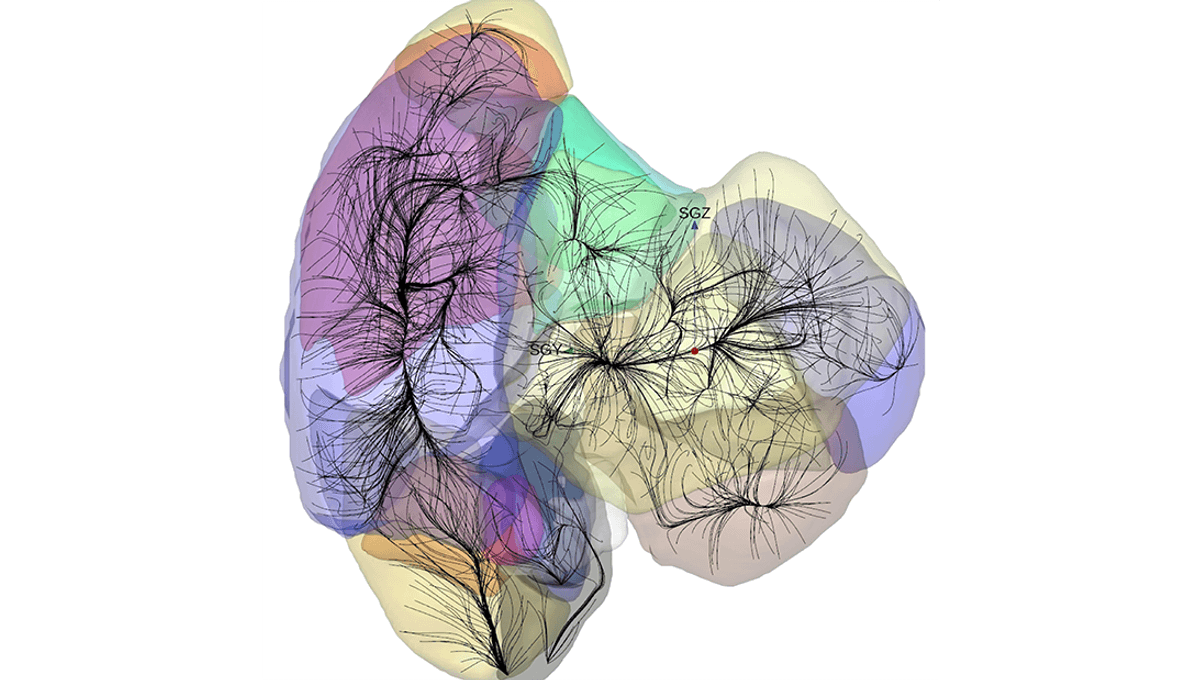
Astronomers have found that our galaxy, the Milky Way, may be a tiny part of an even larger local structure than we thought. The research, if confirmed by further observations and studies, may be evidence that we haven’t quite nailed down our model of the evolution of the universe.
As we study the universe more, we have found ourselves to be part of much larger structures, formed by gravitational interactions. We orbit the Sun, the Sun is part of the Milky Way, and the Milky Way is part of the Local Group, which includes several small galaxies as well as Andromeda, of “it may collide with us” fame.
But it doesn’t stop there. The Local Group is on the outer edge of the Virgo Supercluster, which is itself part of a giant basin known as Laniakea. According to the new study, Laniakea too resides within a larger “basin of attraction” (BoA) potentially 10 times its volume.
“The entire Universe can be considered a patchwork of abutting BoA, just as the terrestrial landscape is separated into watersheds,” the team explains in their paper. “A BoA is generally not gravitationally bound because the relative motion of distant points within it is usually dominated by cosmic expansion.”
The basins of attraction are enormous structures, so much so that gravity is not the dominant force, but there is nevertheless evidence of common flow. The team looked at the motions of 56,000 galaxies, and attempted to make a “probabilistic map” of the local universe, given errors that occur when attempting to measure the velocity and motion of galaxies. In doing so, they hoped to narrow down the possibility of the existence of these basins of attraction.
“Our universe is like a giant web, with galaxies lying along filaments and clustering at nodes where gravitational forces pull them together,” University of Hawai’i at Manoa astronomer R. Brent Tully explained in a statement. “Just as water flows within watersheds, galaxies flow within cosmic basins of attraction. The discovery of these larger basins could fundamentally change our understanding of cosmic structure.”
Running simulations on the data, they found that the BoA encompassed many gigantic structures, including the mysterious Great Attractor.
“Nearby, evidence emerges for a BoA centred in proximity to the highly obscured Ophiuchus cluster that lies behind the centre of the Milky Way Galaxy,” the team explained. “This BoA may include the so-called Great Attractor region and the entity Laniakea, including ourselves. In the extension […] the Sloan Great Wall and the associated structure are overwhelmingly dominant.”
Creating such maps of the universe is a messy business, tracking the movement of galaxies and their effect on each other in order to model these cosmic “currents” and flows. As such, there is a lot of uncertainty. According to the team’s simulations, there is a 60 percent chance that our own Milky Way is in fact not in Laniakea, but in the Shapley concentration.
As well as being nice to really nail down our home address, the study could have much larger implications for our models of the universe, if the same structure continues to be found with further observation and analysis. Simply put, structures of gargantuan size challenge our understanding of the cosmos.
Given what we see in the cosmic microwave background, the first light we can detect after the inflation of the universe, structures can only grow so large within our current models. Yet this, and other similar discoveries, appear to be larger than our current models predict. For now, the team plans to continue mapping the largest structures in the cosmos.
“It is perhaps unsurprising that the further into the cosmos we look, we find that our home supercluster is more connected and more extensive than we thought,” Noam Libeskind, astronomer at the Leibniz Institute for Astrophysics Potsdam, said in a separate statement. “Discovering that there is a good chance that we are part of a much larger structure is exciting. At the moment it’s just a hint: more observations will have to be made to confirm the size of our home supercluster.”
The study is published in Nature Astronomy.
Source Link: Our Galaxy Appears To Be Part Of Structure So Large It Challenges Our Models Of Cosmology